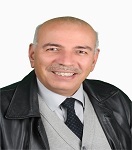
Himat S Hilal
An-Najah National University, Palestine
Title: Photo-catalytic processes in removing organics and microorganisms from water
Biography
Biography: Himat S Hilal
Abstract
According to the WHO, pure natural drinking waters, are scarce (less than 2% in nature). Water is contaminated with different hazards, including organic compounds (dyes, phenol derivatives, chlorinated hydrocarbons, industrial dyes, pharmaceutical wastes, humic acid, etc.) and microorganisms (bacteria). Small and large-scale purification techniques, such as chlorination, ozonation, hydrogen peroxide oxidation, reverse osmosis, UV irradiation, etc, are used. Such processes are effective, but costly, and not available to many third world countries. Chlorination produces chlorinated hydrocarbons in the municipality sewage. Advanced Oxidation Processes (AOP) which involve oxidation of contaminants by solar radiation are promising alternative. AOPs rely on the safe stable low cost TiO2 and ZnO nano-particle, as catalysts in photo-degradation of contaminants. Such materials have large wide bad gap values (~3.2 eV, 387 nm) and demand UV radiations to function. In this plenary, the feasibility of using TiO2 and ZnO nano-particles in complete mineralization of organic contaminants will be assessed. Ongoing activities to sensitize TiO2 and ZnO to visible solar light (main part of solar light), with synthetic dyes or quantum dots, will be critically assessed. Using natural dye sensitizers, as safe alternatives, will also be highlighted. Complete mineralization of organic contaminants with natural-dye sensitized photo-catalysts will be discussed. Ability of the sensitized particles to completely mineralize gram negative bacteria, and the organic matters that result from their death, will also be presented for the first time. Feasibility of using these safe practices at large scale will be assessed.

